This article was co-authored by Molly DeVoss. Molly DeVoss is a Certified Feline Training and Behavior Specialist (CFTBS), a Certified Cat Behavior Consultant (CCBC), a Fear Free Certified Trainer (FFCT), and the Founder of Cat Behavior Solutions. Molly specializes in using positive reinforcement to modify and prevent unwanted behaviors in cats and reduce cat shelter surrender. Molly has sat on the Dallas Animal Advisory committee since 2013 and was voted one of the Top 12 Extraordinary Cat Behaviorists of 2020 by Catpetclub.com. She is certified by both the Animal Behavior Institute and the International Association of Animal Behavior Consultants. She is also the host of the weekly podcast Cat Talk Radio.
There are 13 references cited in this article, which can be found at the bottom of the page.
wikiHow marks an article as reader-approved once it receives enough positive feedback. This article received 16 testimonials and 85% of readers who voted found it helpful, earning it our reader-approved status.
This article has been viewed 533,307 times.
Most cats learn from their mothers at a very young age to use a litter box, but recently-adopted stray or feral cats may not know how to use a litter box.[1] Sometimes even a well-trained cat may seem to "forget" and start relieving himself around the house. The reasons for this lapse in litter box training may vary from medical issues to simple tastes and preferences.[2] Whether you're training a recently-adopted cat who has never used a litter box, or are retraining your long-time cat to use the litter box, following some simple tips will help get your cat on the right path.
Steps
Choosing the Right Litter Box
-
1Choose a large litter box. A common cause of cats engaging in inappropriate elimination is that the litter box is too small for the cat.[3] This is particularly important if your cat is still growing; a litter box that's on the snug side now may be far too small for his liking in a few months.[4] When choosing a size for your cat's litter box, it's generally best to err on the side of caution and get a bigger litter box. Your cat will feel like he has more room, and he will be less likely to think it's too full too quickly.
-
2Decide on covered or uncovered. Covered and uncovered litter boxes both have their advantages and disadvantages. Some cats have a preference, while others don't. You may want to try both and see type of box your cat prefers.[7]
- The biggest advantage to a covered litter box is privacy, which some cats value. Having a cover may also help deter a dog from eating out of the litter box, if that is a risk in your home.[8]
- Covered litter boxes do tend to trap odors inside the chamber, which can make a dirty litter box more even more unappealing to your cat.[9]
- If your cat is very large, he may have a hard time turning around inside the box or digging in the litter.[10]
- Experts may also recommend uncovered boxes for multi-cat households. Cats may feel nervous about being ambushed coming out of the litter box when they can’t see out beyond the exit route.[11]
Advertisement -
3Get more than one box. If you have enough room in your home for more than one litter box, it may be worth getting a second or even a third litter box. This may even be a necessity if you have more than one cat, or if your cat is young and still learning to use the litter box, but some experts recommend that you have at least one litter box per cat in the house, plus one extra.[12] [13]
-
4Find a good location. Cats have a natural instinct to bury their wastes, but if the litter box is inaccessible, your cat may look for other locations to relieve himself.[14] Choosing the right spot for your cat may take a little trial and error, but in general there are some common points to consider when choosing a location.
- Make it accessible and convenient. Your cat won't want to go searching on a long trek when he needs to relieve himself, so make it easy for him to get to the litter box from most places within your home.[15]
- Do not set up a litter box near where you give your cat his food and water. Cats view their feeding area as a sort of home within the home, and their natural instinct is to urinate and defecate away from that space. Setting up a litter box near your cat's food and water bowls can make him anxious and increase the likelihood that he will have out of box eliminations.[16]
- Give your cat some peace and quiet. Most cats want a quiet, undisturbed place to eliminate wastes. If you place your cat's litter box in a noisy, high-traffic area (like a laundry room or in the family room), there's a good chance your cat won't want to relieve himself in the litter box due to its location. Give him a quiet, low-traffic area that's still accessible and easy to find.[17]
Maintaining the Litter Box
-
1Choose the right litter. Cats generally prefer clumping litter, as it's more comfortable to walk on and makes it easier for your cat to bury his wastes. It will also make it easier for you to scoop and clean your cat's waste out of the litter box if you use clumping litter.[18]
- Some cats prefer unscented litter. The Humane Society cautions against using litter with perfume or deodorizer added to it, as this may irritate your cat or trigger an allergic reaction.[19]
-
2Use the right amount of litter. Using too much litter will create a mess, as some litter will inevitably get kicked or spilled out of the box after your cat buries his waste. But failing to use enough litter could make your cat feel as though he can't bury his waste, causing him to eliminate outside the box. A litter box with insufficient litter can also create odor problems, and could make cleaning a bit more work-intensive.[20]
- Some experts recommend filling the litter box with about two inches (5.08 cm) of litter.[21] [22] Other experts recommend using four inches (10.16 cm) of cat litter, allowing your cat a little more freedom to dig and bury.[23]
- Start with two inches (5.08 cm), and if your cat seems unsatisfied, you can increase the litter depth to four inches (10.16 cm).
-
3Keep a clean litter box. If you're raising a kitten or a cat that is still learning to use the litter box, you may want to leave a very small amount of liquid or solid wastes for the first few weeks as a reminder to your cat of where he should eliminate.[24] Once your cat has sufficiently learned where to eliminate, however, you should keep a clean litter box. In fact, a dirty litter box is one of the most common causes of cats eliminating outside the box.[25]
- Scoop out solid and clumped-liquid wastes on a daily basis. Some experts recommend scooping twice daily to keep the litter box as clean as possible.[26]
- Do a full wash of the litter box once every week. Use warm water and a gentle soap; never use harsh chemicals, as these may leave residual chemicals or smells that might harm your cat or deter him from using the box.[27]
- After washing the litter box and thoroughly drying it, refill the box with clean litter to your cat's desired depth (again, generally between two to four inches, or 5.08 to 10.16 cm).[28]
Teaching Your Cat to Use the Litter Box
-
1Learn your cat's schedule. Generally speaking, a cat will need to relieve himself after taking a nap, after he's been playing or running around, or after he's eaten.[29] Learning your cat's schedule will help you determine when he's most likely to relieve himself so you can direct him to the litter box instead of the sofa.
-
2Play with your cat near the box. Since many cats need to eliminate after playing and running around, you can facilitate the process by playing with your cat near his litter box. The activity will most likely leave him needing to eliminate, at which point you can direct him to (or even place him in) the litter box.[30]
- If your cat's litter box is in a room with a door, close the door and stay in the room with him. Bring some of his toys in and let him chase or pounce on his toys until he needs to eliminate.[31]
-
3Teach him what to do. If your cat never learned to use a litter box from his mother, you may need to show him how it's done. That doesn't mean actually using the litter box yourself; rather, you'll have to carry him to the litter box when he's about to eliminate, and teach him how to dig in the litter.[32]
- Use a finger to scrape some litter aside until he learns by example. If your cat eliminates in the box but hasn't learned to bury it, use your finger to scoop a little litter on top of his waste. It will take time, but eventually he'll understand that you expect him to learn these behaviors.[33]
- When showing your cat how to dig and bury his waste, it's important that you use your own finger. If you grab his paw and try to "show" him how to dig and bury, it might frighten him or make him anxious, which can lead to litter box aversion over time.[34] Just be patient, and trust that your cat will eventually learn to do it on his own.
Addressing Inappropriate Elimination
-
1Never yell at your cat. It's important to remember that your cat is not trying to cause problems. He may be experiencing medical problems, or you may have gotten him a litter box or litter that he is uncomfortable using. Yelling at or scolding your cat will only make him fearful of you, and will do nothing to solve his elimination problems.[35]
-
2Put waste where it belongs. If your cat eliminates outside the litter box, rather than simply tossing his feces in the garbage, it may be helpful to pick it up with a paper towel and place it in the litter box. This can serve as a reminder for him, as he'll smell it and associate relieving himself with going in the litter box.[36]
-
3Clean out-of-box waste thoroughly. If your cat has urinated or defecated outside the litter box, either on the floor, rug, or a piece of furniture, it's imperative that you thoroughly clean the spot to prevent future accidents. Once a cat smells his waste on a certain spot, he'll associate that spot with excreting waste.[37]
- User an enzyme-based cleaner to treat soiled rugs and furniture. This type of cleaner will help break down urine and fecal odor, reducing the likelihood that your cat will relieve himself there in the future.[38]
- If your cat continues to relieve himself in a problem area, try closing the door to keep him out of that room, if possible. You can also try leaving undesirable textures on the floor around that problem area, such as aluminum foil or upside-down carpet runners.[39]
-
4Move food and water to the problem area. If your cat continues to relieve himself outside the litter box and seems to have one spot he really enjoys, try moving his food and water to the area where he keeps eliminating. Cats have a hardwired impulse to avoid excreting waste around food and water, and this may be the push a stubborn cat needs to stop eliminating outside the box.[40]
-
5Try a temporary confinement period. If your cat continues to have problems eliminating outside the box, you may want to consider trying a confinement period. This should only be done as a last resort, when all other methods have failed.[41]
- Choose a room in your home where your cat can be safely confined. Make sure that he will have enough room in the area where you choose to confine him, and be sure that the room will not be susceptible to extreme temperatures. In other words, make sure the room you choose is cool enough in the summer and warm enough in the winter (depending on when you conduct the confinement period).[42] [43]
- Put your cat's litter box in one end of the room and his bedding, food, and water at the other end. Be sure that the room is large enough to facilitate this, as cats will not eliminate near their food and water.[44]
- If your cat continues to relieve himself outside the box, try scattering cat litter around on the floor in the room he's confined to. He will inevitably relieve himself on the litter, and may over time come to associate cat litter with relieving himself.[45]
Ruling Out Medical Problems
-
1Check if your cat is eliminating elsewhere. If your cat is not using the litter box, it's important to check around the house to ensure that he is still eliminating wastes. If he does not seem to be eliminating anywhere around the house, he may have a partial or total urethral obstruction. If you believe your cat is not eliminating waste at all, it's imperative that you take him to a veterinary hospital immediately.[46]
- If your cat is eliminating but not using the litter box, it could be a sign of urinary tract problems.[47] Some cats with urinary tract infections or blockages are prone to urinating on tile, cement, or wooden floors, as they tend to seek out surfaces that are cool to the touch and smooth against the skin.
-
2Look for blood in your cat's urine. One of the early signs of feline lower urinary tract disease (FLUTD), as well as kidney and bladder stones, is blood in the urine and frequent or prolonged efforts at urinating. Other symptoms to watch for include crying out while urinating and excessive licking/cleaning of the genitals. If your cat is experiencing any of these symptoms, it's important that you take him to a vet as soon as possible. Leaving these conditions untreated may lead to a blocked urethra, which can be fatal.
- In addition to the general examination, your vet will most likely run a urinalysis, and may also run a urine culture and order x-rays to determine the cause and location of your cat's problem.
- Your vet will most likely prescribe some type of medicinal treatment for kidney stones. If the vet determines that your cat has bladder stones, he will most likely require surgery to either remove the stones or break them apart inside the bladder to facilitate their passage.
- If your cat has suffered from urinary tract problems or bladder/kidney stones, he may not be getting enough water. Always ensure that your cat has access to fresh water (changed daily). Your vet may also recommend that you give your cat wet (canned) food at least 50% of the time.
-
3Look for vomiting, diarrhea, and weight loss. Some cats suffer from inflammation along the gastrointestinal tract, causing feline inflammatory bowel disease (IBD). The most common symptoms of IBD include vomiting, diarrhea, weight loss, and lethargic tendencies. Some cats with IBD also experience bloody stool. Symptoms can vary depending on what part of the gastrointestinal tract is affected. If your cat suffers from any of these symptoms, you should take him in to see a vet as soon as possible.
- Your vet will most likely run blood work and fecal examinations to determine if the symptoms are caused by IBD. In addition, your vet may also need to use a radiograph and/or ultrasound to determine the location of your cat's affliction.
- To treat IBD, your vet may prescribe your cat corticosteroids to reduce inflammation and immune system response to the IBD. Depending on the severity of your cat's IBD, your vet may also recommend a course of antibiotics.
- Your vet may recommend dietary changes to better accommodate your cat's IBD. Common dietary requirements for cats with IBD include hypoallergenic cat food, as well as foods that are high in fiber and low in fat.
Expert Q&A
-
QuestionDo you have to train a cat to use the litter box?
 Pippa Elliott, MRCVSDr. Elliott, BVMS, MRCVS is a veterinarian with over 30 years of experience in veterinary surgery and companion animal practice. She graduated from the University of Glasgow in 1987 with a degree in veterinary medicine and surgery. She has worked at the same animal clinic in her hometown for over 20 years.
Pippa Elliott, MRCVSDr. Elliott, BVMS, MRCVS is a veterinarian with over 30 years of experience in veterinary surgery and companion animal practice. She graduated from the University of Glasgow in 1987 with a degree in veterinary medicine and surgery. She has worked at the same animal clinic in her hometown for over 20 years.
Veterinarian Cats are amazingly clean creatures and most learn to use a tray by copying their mothers. When provided with the right tray, a familiar cat litter, and a nice quiet spot, most cats will start using the tray and not need training to do so.
Cats are amazingly clean creatures and most learn to use a tray by copying their mothers. When provided with the right tray, a familiar cat litter, and a nice quiet spot, most cats will start using the tray and not need training to do so. -
QuestionCan you toilet train a cat?
 Pippa Elliott, MRCVSDr. Elliott, BVMS, MRCVS is a veterinarian with over 30 years of experience in veterinary surgery and companion animal practice. She graduated from the University of Glasgow in 1987 with a degree in veterinary medicine and surgery. She has worked at the same animal clinic in her hometown for over 20 years.
Pippa Elliott, MRCVSDr. Elliott, BVMS, MRCVS is a veterinarian with over 30 years of experience in veterinary surgery and companion animal practice. She graduated from the University of Glasgow in 1987 with a degree in veterinary medicine and surgery. She has worked at the same animal clinic in her hometown for over 20 years.
Veterinarian Yes, you can train a cat to relieve themself in a human toilet. However, this is controversial and most cat behaviorists are against the idea because things can all too easily go wrong and stress the cat. If the cat becomes fearful of the toilet, they then will start to mess in the house...which no one wants.
Yes, you can train a cat to relieve themself in a human toilet. However, this is controversial and most cat behaviorists are against the idea because things can all too easily go wrong and stress the cat. If the cat becomes fearful of the toilet, they then will start to mess in the house...which no one wants. -
QuestionHow do I litter train my orphaned kitten?
 Pippa Elliott, MRCVSDr. Elliott, BVMS, MRCVS is a veterinarian with over 30 years of experience in veterinary surgery and companion animal practice. She graduated from the University of Glasgow in 1987 with a degree in veterinary medicine and surgery. She has worked at the same animal clinic in her hometown for over 20 years.
Pippa Elliott, MRCVSDr. Elliott, BVMS, MRCVS is a veterinarian with over 30 years of experience in veterinary surgery and companion animal practice. She graduated from the University of Glasgow in 1987 with a degree in veterinary medicine and surgery. She has worked at the same animal clinic in her hometown for over 20 years.
Veterinarian Set up a litter tray in a quiet corner of the room where Kitty won't be disturbed. Don't use clumping cat litter. Start by popping some Kitty poop into the tray, to mark it as a toilet. Kitty will need to toilet on waking and shortly after eating, so pop them in the tray at these times. When they happen to use the tray, praise them softly.
Set up a litter tray in a quiet corner of the room where Kitty won't be disturbed. Don't use clumping cat litter. Start by popping some Kitty poop into the tray, to mark it as a toilet. Kitty will need to toilet on waking and shortly after eating, so pop them in the tray at these times. When they happen to use the tray, praise them softly.
Warnings
- If your cat is obviously in pain during elimination, or has blood in his stool or urine, take him to the vet immediately.⧼thumbs_response⧽
References
- ↑ https://www.longmonthumane.org/?q=litter-box-training
- ↑ http://www.humanesociety.org/animals/cats/tips/solving_litter_box_problems.html
- ↑ http://www.catinfo.org/?link=litterbox
- ↑ http://www.catbehaviorassociates.com/kitten-litter-box-training/
- ↑ Molly DeVoss. Certified Feline Training and Behavior Specialist & Certified Cat Behavior Consultant. Expert Interview. 28 June 2021.
- ↑ http://www.animalhumanesociety.org/training/litter-box-101-preventing-and-solving-litter-box-problems
- ↑ http://www.humanesociety.org/animals/cats/tips/preventing_litter_box_problems.html
- ↑ http://www.humanesociety.org/animals/cats/tips/preventing_litter_box_problems.html
- ↑ http://www.humanesociety.org/animals/cats/tips/preventing_litter_box_problems.html
- ↑ http://www.humanesociety.org/animals/cats/tips/preventing_litter_box_problems.html
- ↑ Molly DeVoss. Certified Feline Training and Behavior Specialist & Certified Cat Behavior Consultant. Expert Interview. 28 June 2021.
- ↑ Molly DeVoss. Certified Feline Training and Behavior Specialist & Certified Cat Behavior Consultant. Expert Interview. 28 June 2021.
- ↑ http://www.catbehaviorassociates.com/how-many-litter-boxes-should-you-have/
- ↑ http://www.humanesociety.org/animals/cats/tips/solving_litter_box_problems.html
- ↑ http://www.catbehaviorassociates.com/litter-box-problems-due-to-location-aversion/
- ↑ http://www.catbehaviorassociates.com/litter-box-problems-due-to-location-aversion/
- ↑ http://www.catbehaviorassociates.com/litter-box-problems-due-to-location-aversion/
- ↑ http://www.humanesociety.org/animals/cats/tips/preventing_litter_box_problems.html
- ↑ http://www.animalhumanesociety.org/training/litter-box-101-preventing-and-solving-litter-box-problems
- ↑ http://www.catbehaviorassociates.com/how-much-litter-to-put-in-the-litter-box/
- ↑ Molly DeVoss. Certified Feline Training and Behavior Specialist & Certified Cat Behavior Consultant. Expert Interview. 28 June 2021.
- ↑ http://www.animalhumanesociety.org/training/litter-box-101-preventing-and-solving-litter-box-problems
- ↑ http://www.catbehaviorassociates.com/how-much-litter-to-put-in-the-litter-box/
- ↑ http://www.catbehaviorassociates.com/kitten-litter-box-training/
- ↑ http://www.humanesociety.org/animals/cats/tips/solving_litter_box_problems.html
- ↑ http://www.catbehaviorassociates.com/no-more-stinky-litter-boxes/
- ↑ http://www.animalhumanesociety.org/training/litter-box-101-preventing-and-solving-litter-box-problems
- ↑ http://www.animalhumanesociety.org/training/litter-box-101-preventing-and-solving-litter-box-problems
- ↑ http://www.catbehaviorassociates.com/kitten-litter-box-training/
- ↑ https://www.aspca.org/pet-care/virtual-pet-behaviorist/cat-behavior/litter-box-problems
- ↑ https://www.aspca.org/pet-care/virtual-pet-behaviorist/cat-behavior/litter-box-problems
- ↑ http://www.catbehaviorassociates.com/kitten-litter-box-training/
- ↑ http://www.catbehaviorassociates.com/kitten-litter-box-training/
- ↑ http://www.catbehaviorassociates.com/kitten-litter-box-training/
- ↑ https://www.longmonthumane.org/?q=litter-box-training
- ↑ http://www.catbehaviorassociates.com/kitten-litter-box-training/
- ↑ http://www.animalhumanesociety.org/training/litter-box-101-preventing-and-solving-litter-box-problems
- ↑ http://www.animalhumanesociety.org/training/litter-box-101-preventing-and-solving-litter-box-problems
- ↑ http://www.animalhumanesociety.org/training/litter-box-101-preventing-and-solving-litter-box-problems
- ↑ http://www.animalhumanesociety.org/training/litter-box-101-preventing-and-solving-litter-box-problems
- ↑ https://www.aspca.org/pet-care/virtual-pet-behaviorist/cat-behavior/remedial-litter-box-training
- ↑ Molly DeVoss. Certified Feline Training and Behavior Specialist & Certified Cat Behavior Consultant. Expert Interview. 28 June 2021.
- ↑ https://www.aspca.org/pet-care/virtual-pet-behaviorist/cat-behavior/remedial-litter-box-training
- ↑ https://www.aspca.org/pet-care/virtual-pet-behaviorist/cat-behavior/remedial-litter-box-training
- ↑ https://www.aspca.org/pet-care/virtual-pet-behaviorist/cat-behavior/remedial-litter-box-training
- ↑ http://www.catinfo.org/?link=litterbox
- ↑ Molly DeVoss. Certified Feline Training and Behavior Specialist & Certified Cat Behavior Consultant. Expert Interview. 28 June 2021.
About This Article
To litter train a cat, set up a litter box in a spot that's accessible and convenient for your cat. If your cat doesn't use the litter box on its own, bring it to the litter box after a play session or when it wakes up from a nap, which is when cats usually relieve themselves. You can even use your fingers to dig up some of the litter to show your cat what to do. If your cat doesn't cover its waste after it relieves itself, show it how by brushing some litter on top of it with your fingers. For help stopping your cat from going to the bathroom outside of the litter box, scroll down!
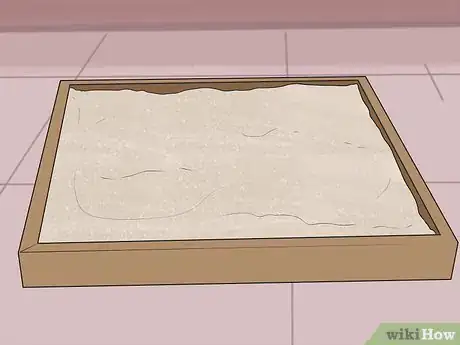


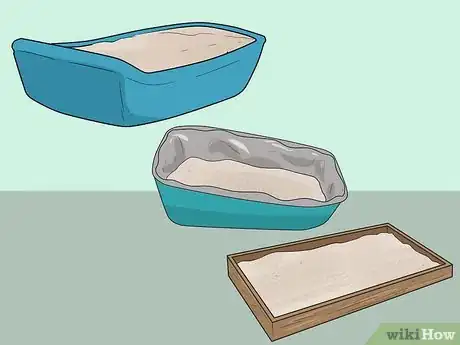
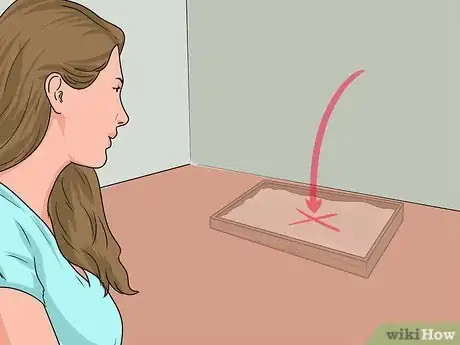



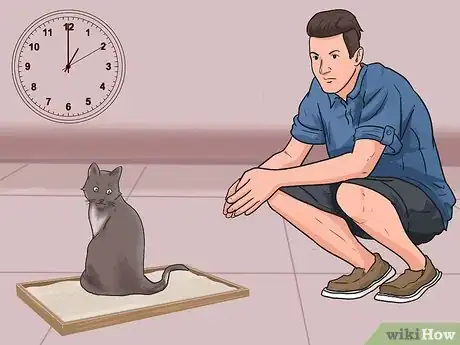
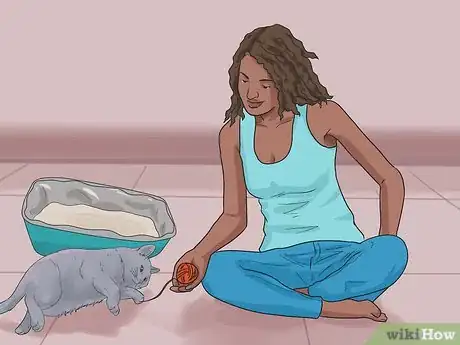


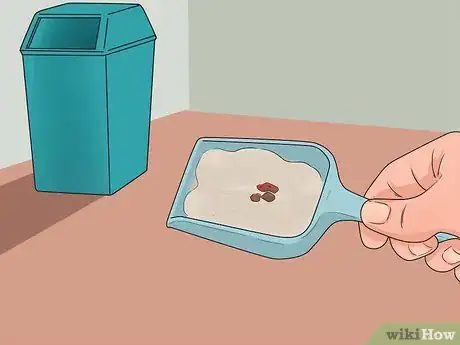



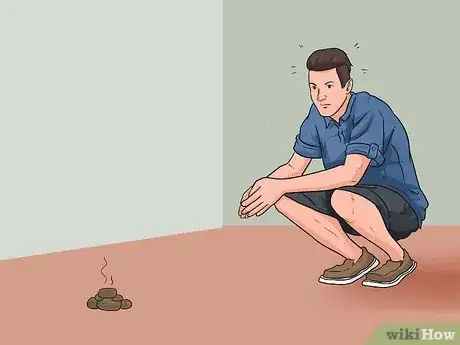
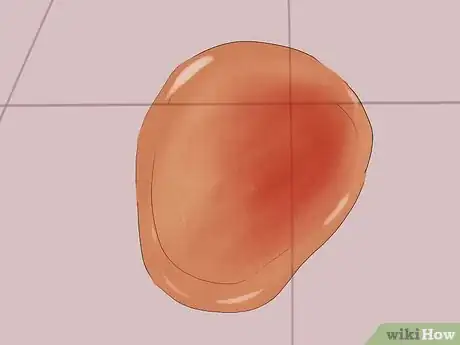
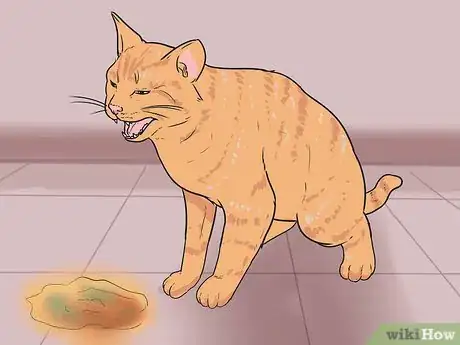
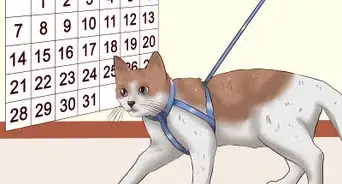

-Step-11-Version-6.webp)



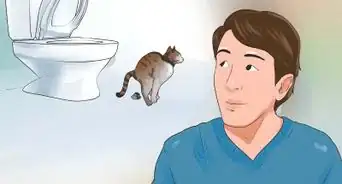




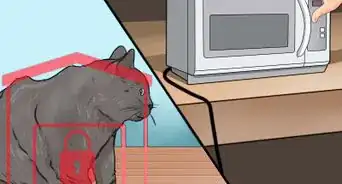











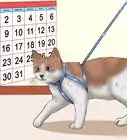

-Step-11-Version-6.webp)



































